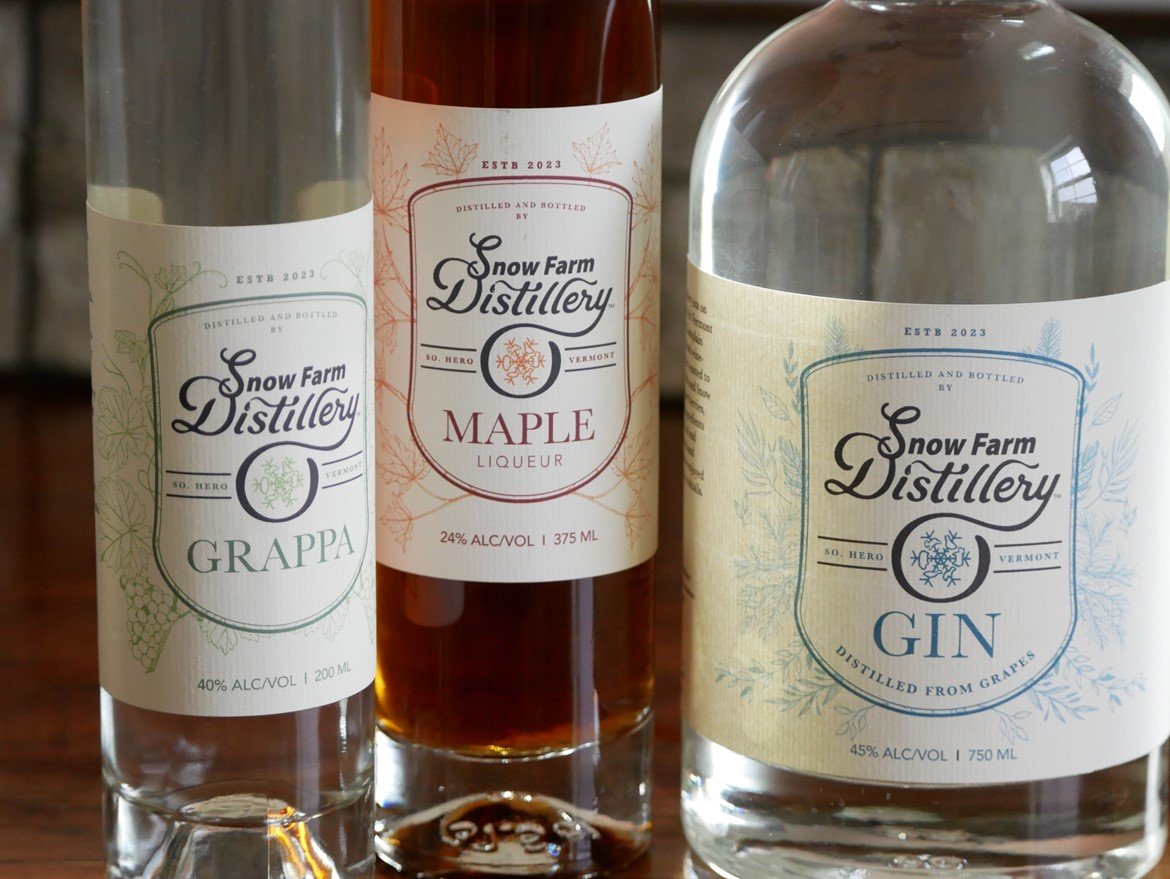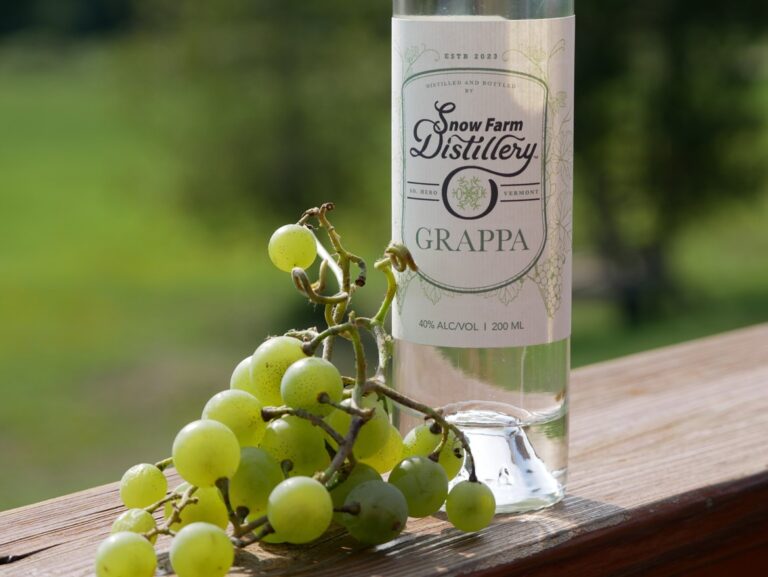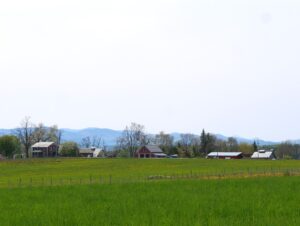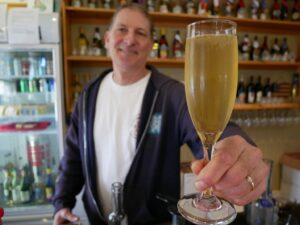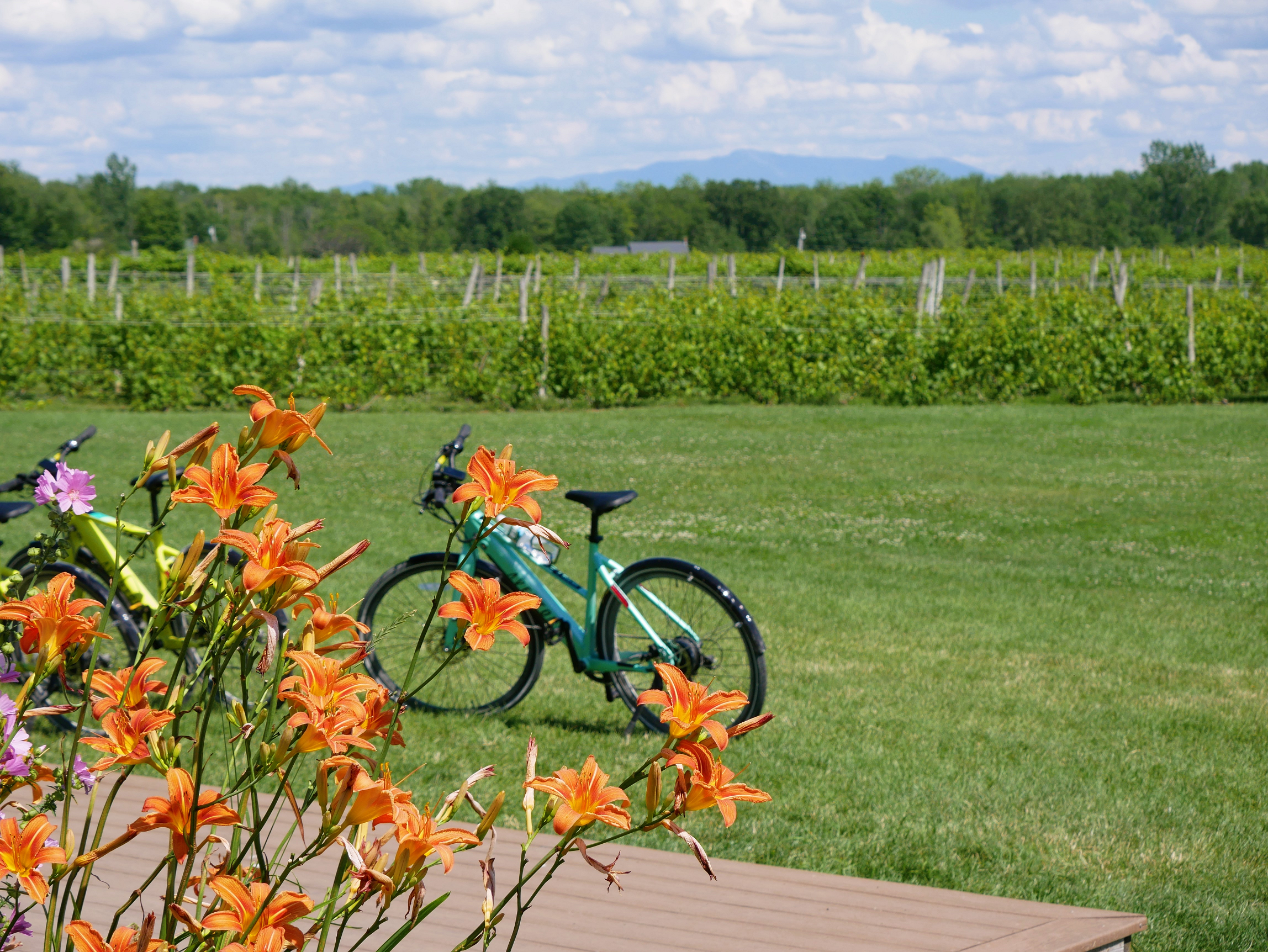When it comes to wine and spirits, many people are familiar with the classics: whiskey, gin, vodka—but what about grappa? This Italian brandy made from grapes has been produced for centuries yet remains relatively unknown in the U.S.
“In Italy, they call it grappa. In the States, you can call it grappa as long as you make it the same way that they do in Italy,” Patrick Barrelet, head winemaker and distiller at Snow Farm Vineyard & Distillery, said.
Snow Farm Vineyard & Distillery in Vermont is on a mission to bring this classic eau-de-vie to more people. Our new grappa, crafted from the grapes grown at our vineyard and distilled on-site, offers a taste of Italy with a local twist.
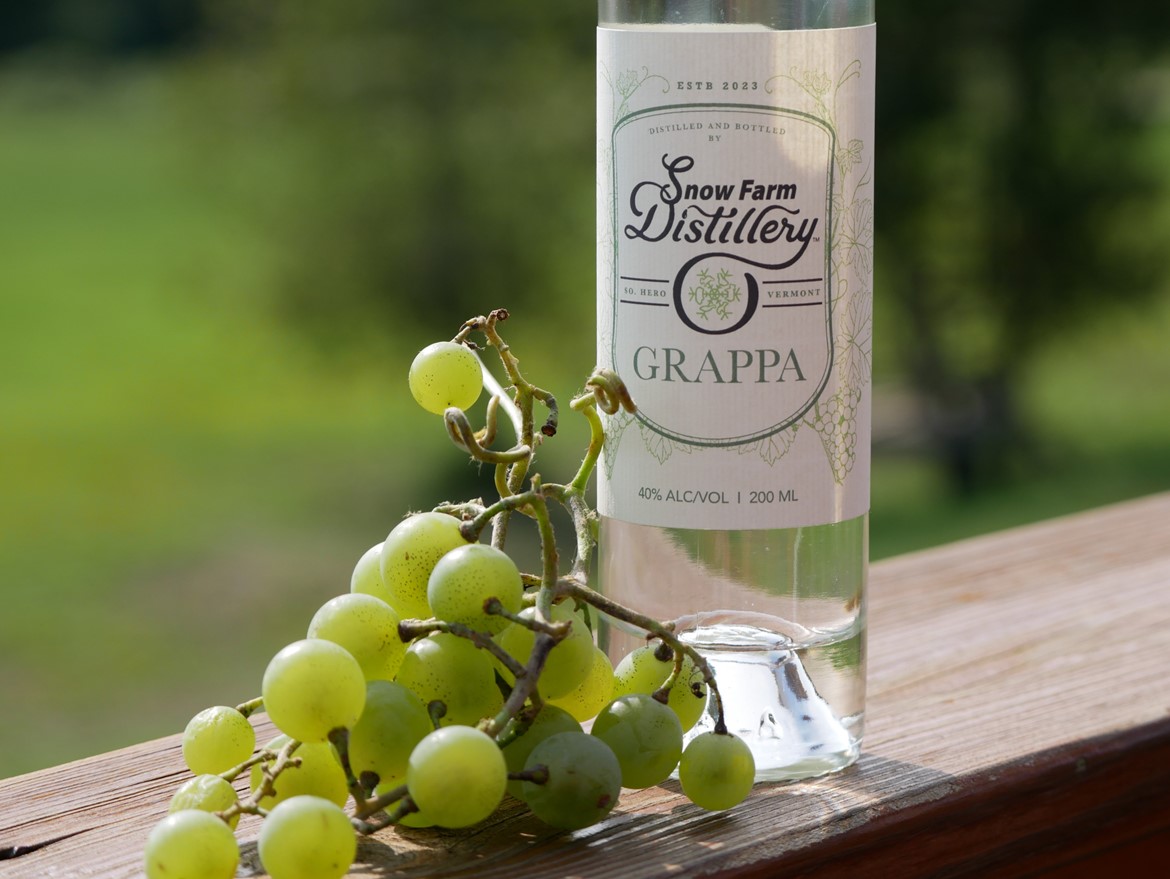
What is Grappa?
So, what is grappa? At its most basic definition, grappa is a type of brandy made from leftover grape pomace—the skins, seeds, and stems—after wine production.
“That’s what’s fun about grappa. You really get a wide range of flavors because if I use Cayuga grape skins, the spirits will taste completely different than if they are made from Seyval, Riesling, Frontenac, Vignoles, or Vidal grape skins. They all have their own characteristics. Each batch takes on the taste of the varietal used. It’s like wine in that way,” Barrelet said.
The grapes and skins must be collected for grappa when they’re fresh, and so the window to start a batch of grappa only occurs during the grape harvest in the fall each year.
The pomace is fermented in stainless steel tanks and then distilled in a copper still to create a clear, 70 to 120-proof spirit. The minimum alcohol strength you’ll find is 37.5 percent. The strength of Snow Farm Distillery’s grappa is 40 percent.
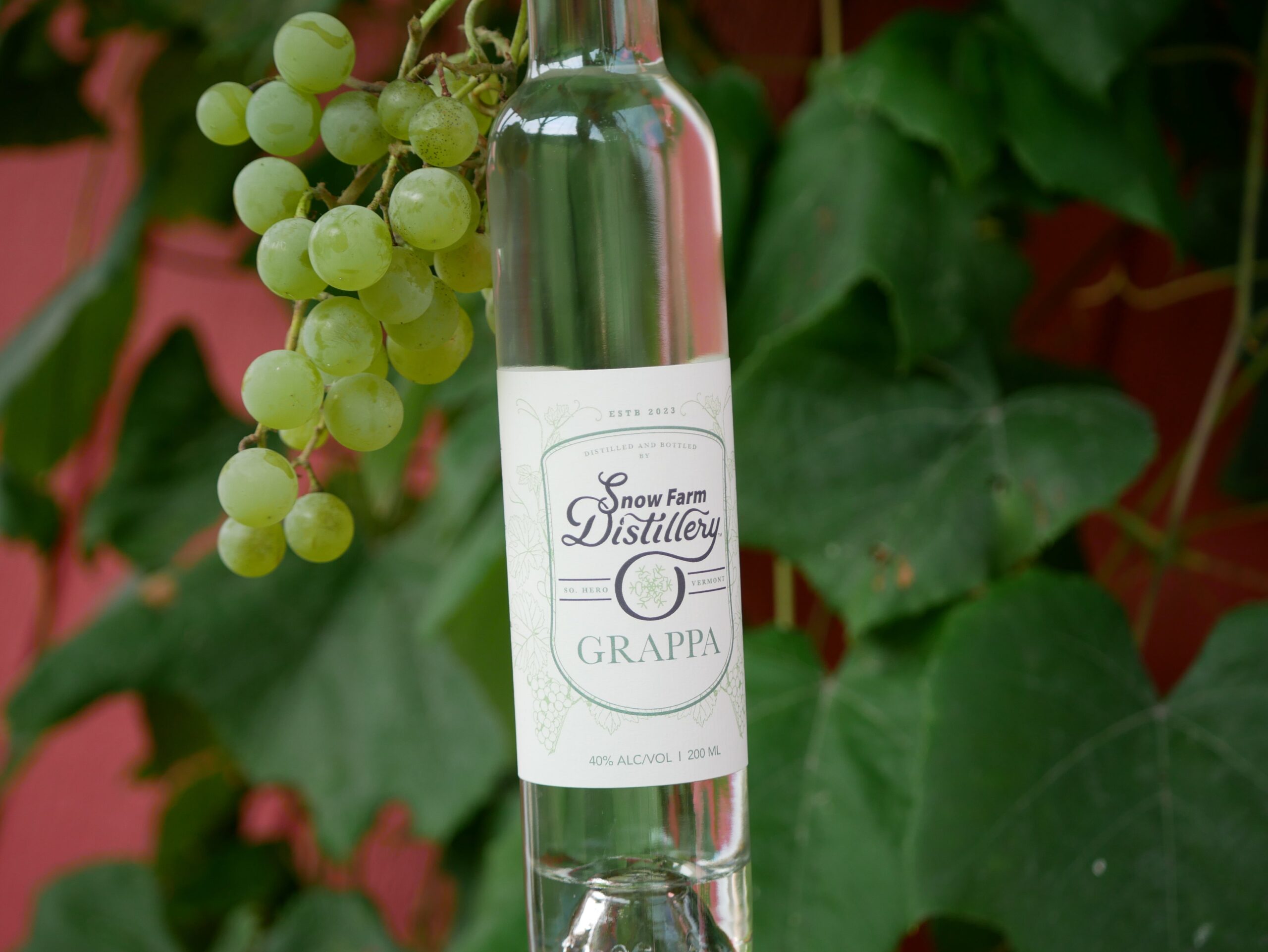
“A lot of people think that grappas are very strong, harsh, and potent alcohol, but actually, our grappas are very smooth, silky, and smell really nice,” Barrelet said. “They’re very aromatic with a hint of sweetness, even though there is no sugar added.”
Though grappa is a type of brandy, the process of making it is different, which is why it has its own name and definition. In order to be called brandy, a spirit must be made from the fermented juice of the grapes. Grappa is made from grape pomace or the leftovers from wine production and not the juice, though a small amount of juice is left in the mixture. Another difference is grappa doesn’t need to ferment as long as brandy does.
“With brandy, once the juice is fermented, I put it in the still and distill it. So it’s basically made with wine. Then it must be aged for a minimum of two years in oak barrels to be called brandy,” Barrelet said.
There are different categories of grappas based on their age, where they were made, and the type of grape used. Snow Farm Vineyard ages our grappa for approximately four months, though sometimes less, and uses white grapes to create a young, unaged aromatic grappa.
The main list of grappas includes:
-
-
- Giovane (young and unaged)
- Aromatica (made with aromatic or semi-aromatic grapes)
- Affinata in Legno (matured in wood for less than the 12 months required to be called ‘aged’)
- Invecchiata/ Vecchia (aged/old and matured in wood for at least 12 months)
- Stravecchia/ Riserva (very old/reserve and matured for at least 18 months)
- Aromatizzata (flavored with herbs or berries)
- Monovitigno (single variety with 85% of the pomace from that variety)
-
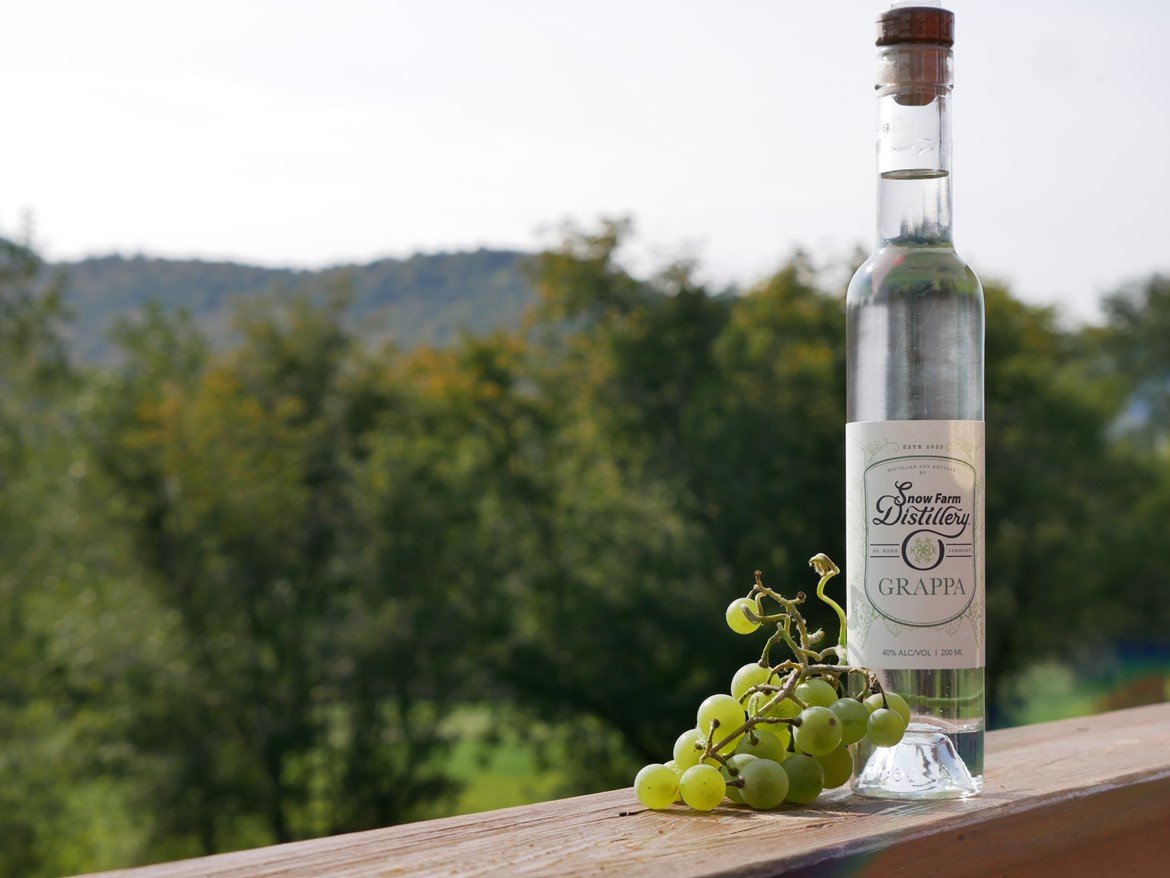
Grappa With a Vermont Twist
Grappa is often associated with Italian culture, where it has been produced since the Middle Ages. It was originally considered a drink for peasants since it made use of leftover grape byproducts that were not needed for winemaking. However, in the past century, grappa has gained popularity and is now enjoyed by many as a digestif after a meal.
“It’s very smooth, and you can drink it on its own. I like to sip a little glass after a meal,” Barrelet said. “You can also make some really good cocktails with grappa – you can replace rum and gin with grappa in cocktails. For me, it’s a very nice spirit on its own.”
Barrelet says the secret to creating a smooth grappa is knowing the art and science of how much liquid to keep in the grape mash before distilling and adding water if necessary.
“I don’t overpress the grapes, and I keep a little bit of the juice in,” Barrelet said. “You need to have vapor to extract the alcohols in the still; you can’t just do it with solids.”
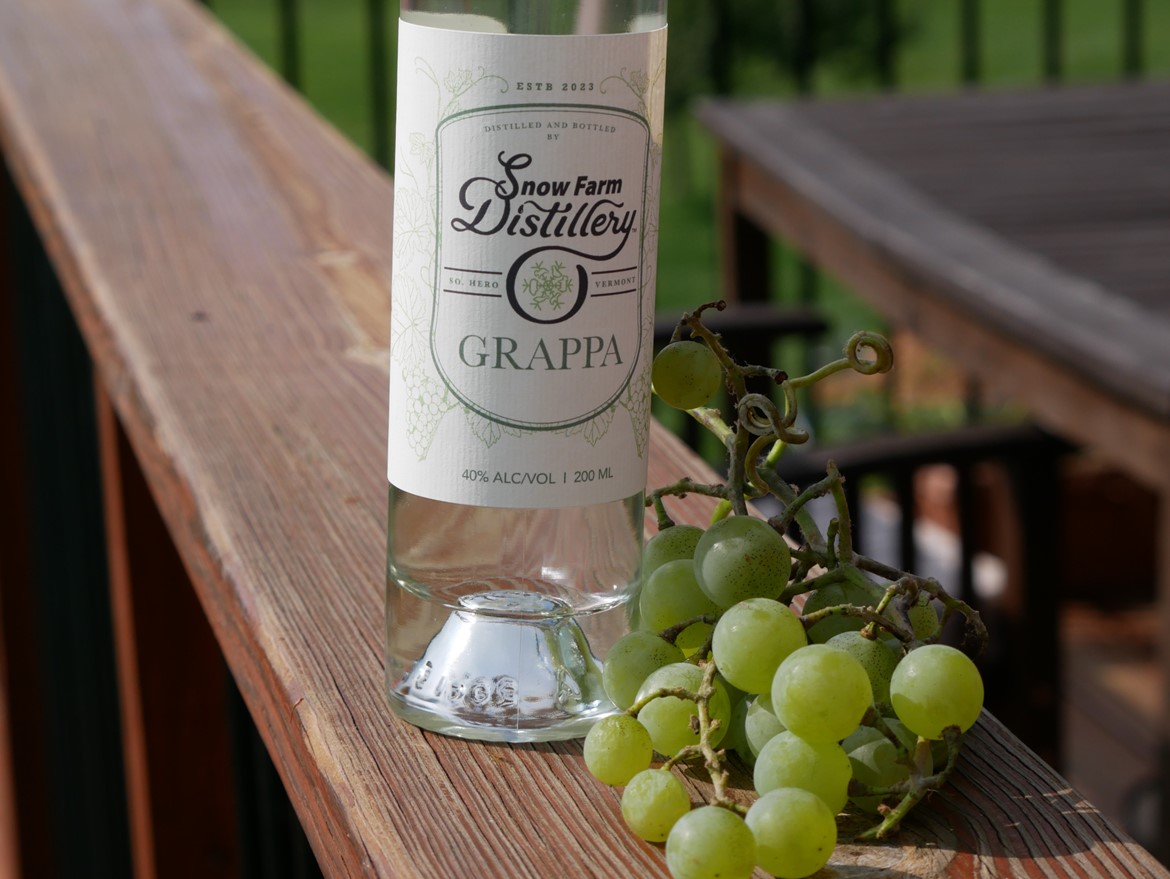
Snow Farm Vineyard & Distillery’s grappa follows the traditional Italian method but with a nod to Vermont’s unique terroir. The grapes used in our grappa are grown on our own 12-acre vineyard located on the shores of Lake Champlain. The vineyard is known for its cold-climate grape varieties, which add a distinct flavor to the grappa.
“What we do here is use as much of the ingredients that the land gives us,” Barrelet said. “It gives us grapes, then there’s the juice, and the skins can be used too. That’s a big reason we wanted to make grappa.”
Before Snow Farm Vineyard & Distillery began making grappa, the grape skins would go straight to the compost pile after they were used to make wine. Now, the grapes are used twice, for wine and then grappa, before they are composted.
“We make this beautiful grappa spirit, and we get a little more out of it before we give it back to the earth,” Barrelet said.
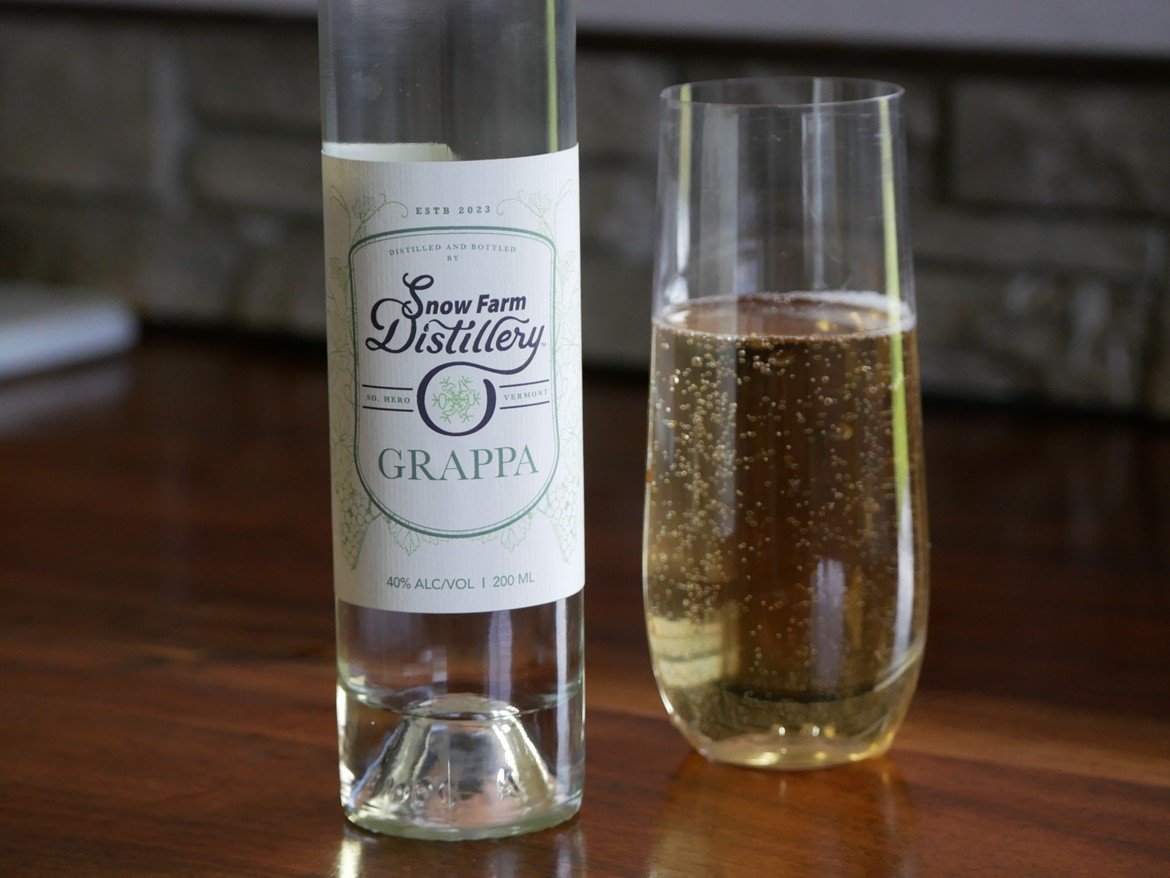
A Snow Farm 75 is made up of Snow Farm’s grappa, apple dessert wine and natural sparkling wine.
Enjoy Grappa at Home or at Snow Farm
Snow Farm Vineyard & Distillery recommends using our grappa in a Snow Farm 75 by mixing it with our iced apple dessert wine and Pét-nat natural sparkling wine (pictured above).
Another option is to add a little bit of grappa to a glass of Pét-nat or other sparkling wine with some fresh fruit. When you mix Pét-nat with grappa, it adds earthy notes and complexity to the fruit-forward wine. It’s a great way to introduce your friends to grappa if they haven’t tried it before.
Grappa, when served straight-up, is best enjoyed in a stemmed tulip-shaped glass. Younger grappas should be served slightly chilled, and aged grappas at room temperature. In Italy, grappa is often served with espresso and desserts like fruit tarts, fresh fruits, and light cakes.
In addition to being a delicious drink, some say grappa may have health benefits such as reducing the risk of heart disease and aiding in digestion. Like all alcohol, it should be consumed in moderation, but incorporating a small amount of grappa into your post-meal routine could have some positive effects on your health.
Although not as widely recognized as some other alcoholic beverages, grappa is gaining popularity and definitely worth a taste. Snow Farm Vineyard & Distillery’s grappa offers a taste of Italy with a local twist, thanks to Vermont’s unique grapes. Whether you’re a wine and spirits connoisseur or just looking to try something new, grappa is a great choice.
If you’re in Northern Vermont, be sure to stop by Snow Farm Vineyard & Distillery for a taste of our delicious grappa. While you’re there, you can also check out our full line of wines and Vermont spirits, including gin, maple liqueur, and more. Salute